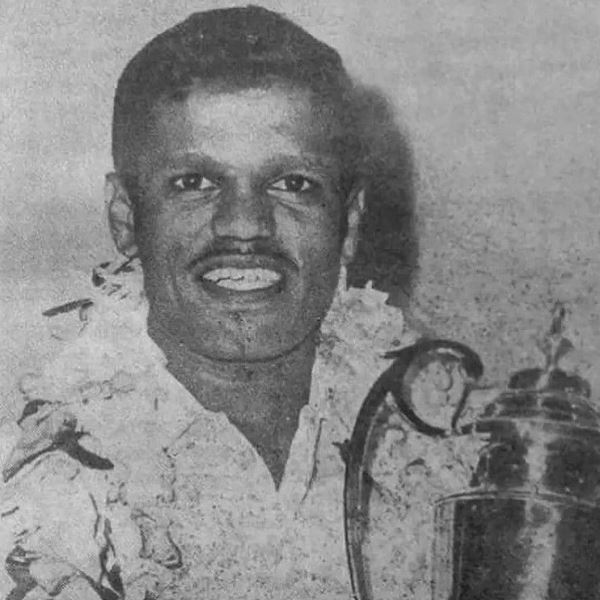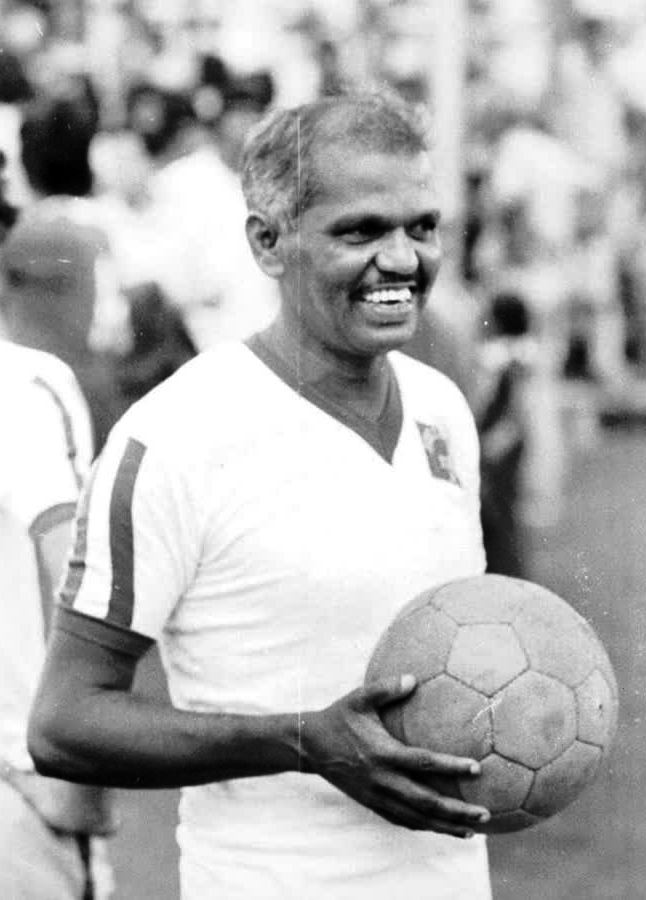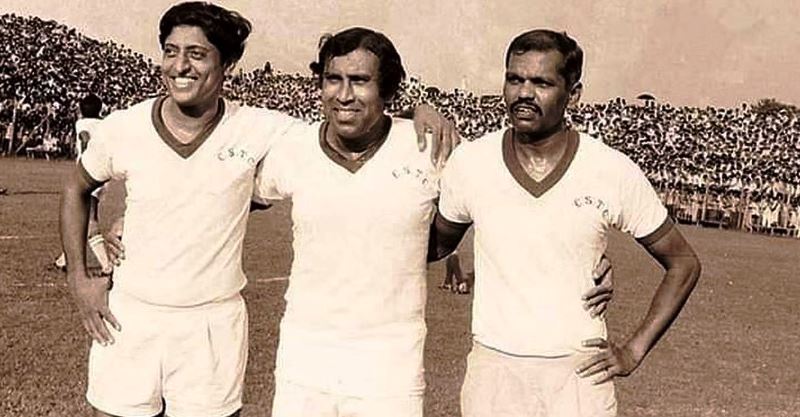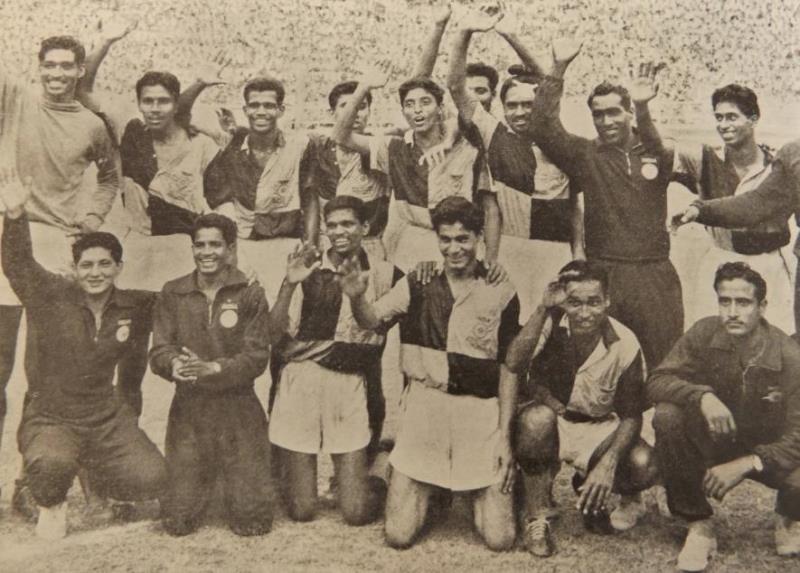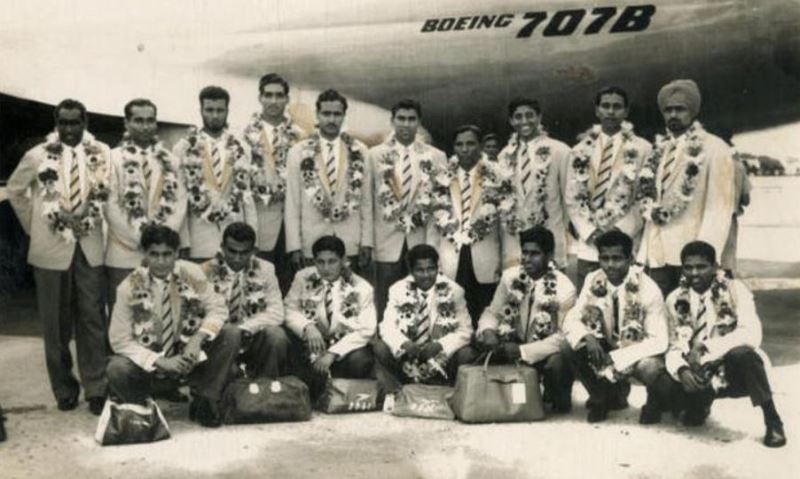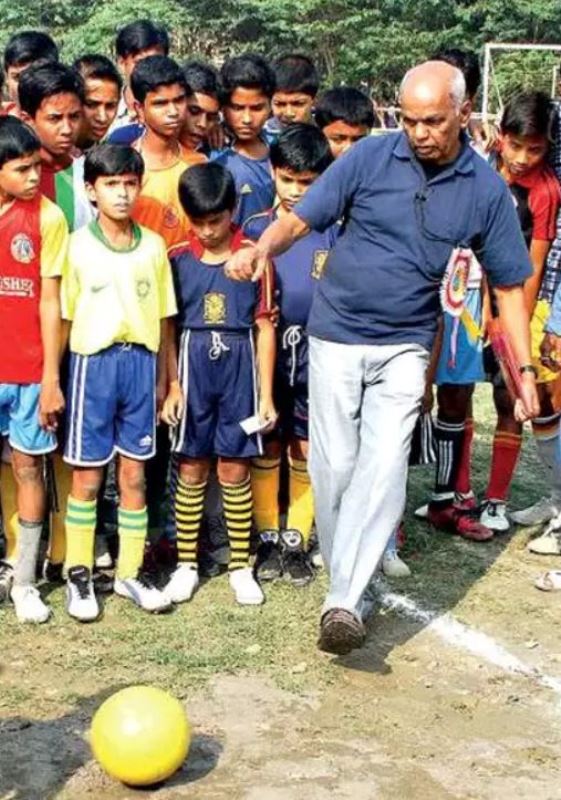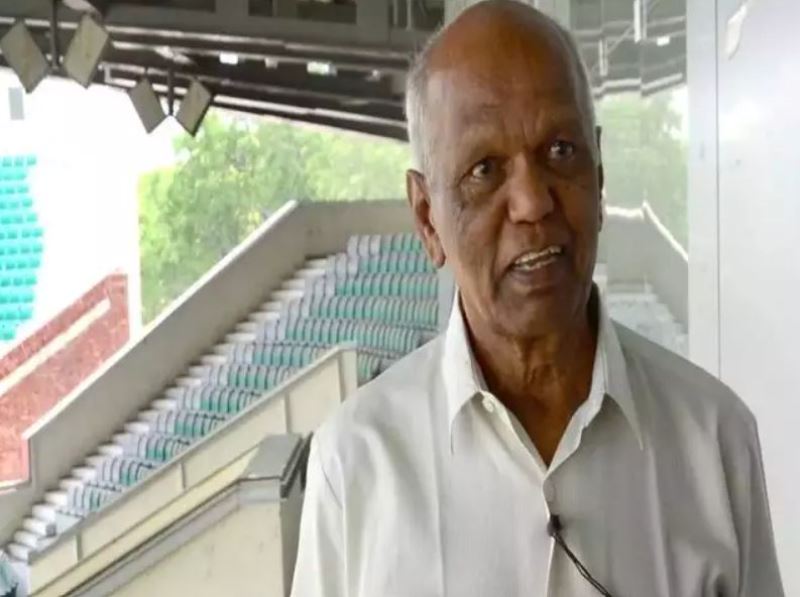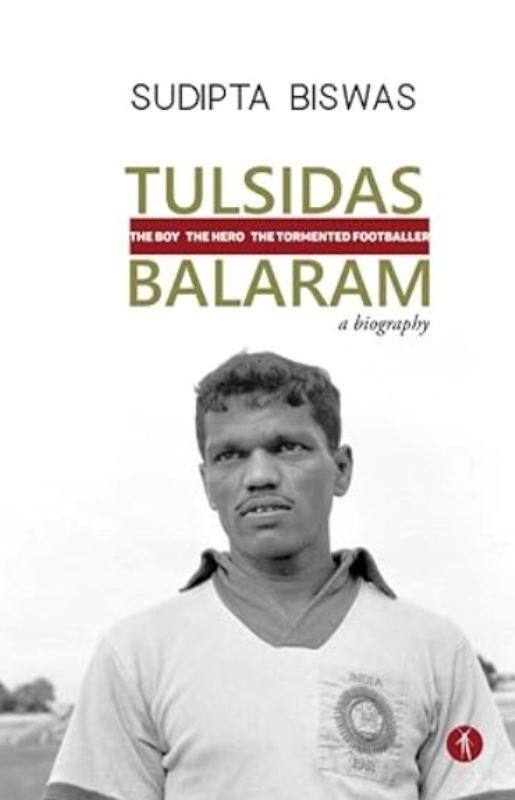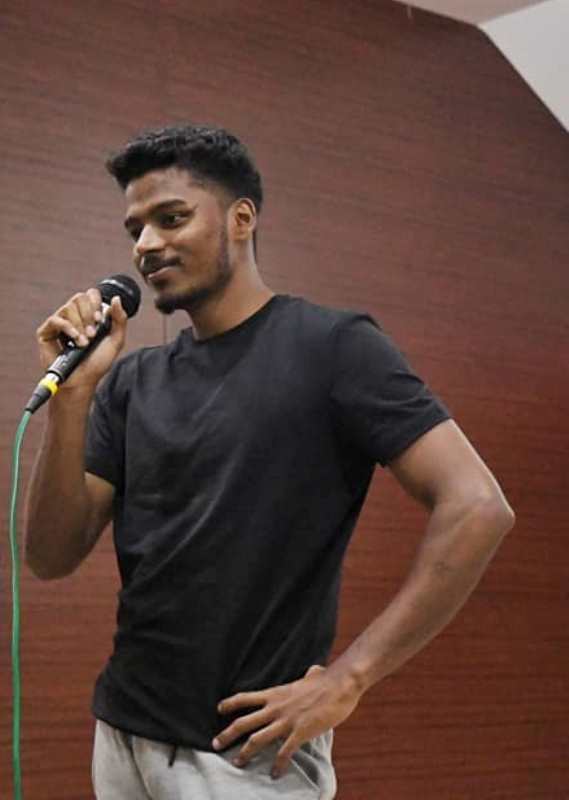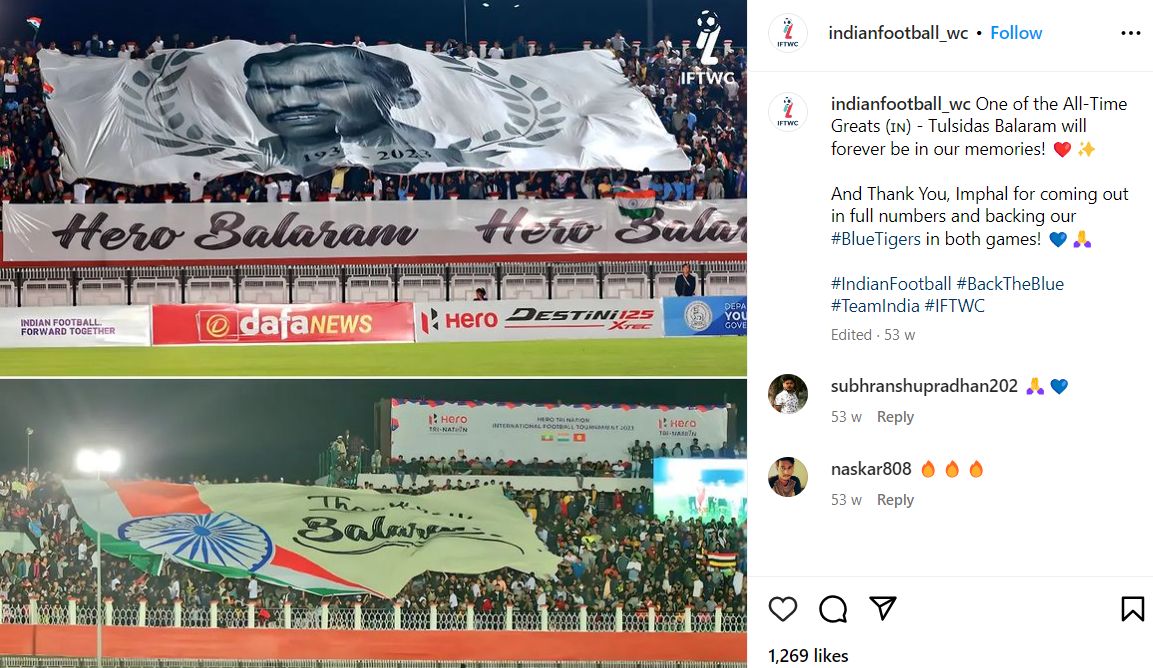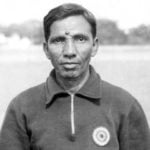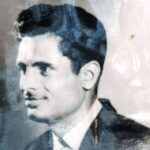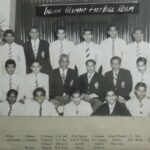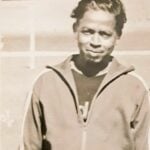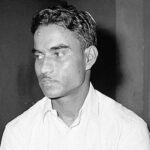Tulsidas Balaram Age, Death, Family, Biography
Quick Info→
Age: 83 Years (at The Time Of Death)
Death Cause: Multiple Age-related Ailments
Hometown: Hyderabad
| Bio/Wiki | |
|---|---|
| Other name | Tulsidas Balaraman |
| Profession | Footballer |
| Physical Stats & More | |
| Height (approx.) | 5' 8" (173 cm) |
| Football | |
| International Debut | 1956 Melbourne Olympics (against Yugoslavia) |
| Jersey Number | # 11 (India) |
| Domestic/State Team | Hyderabad and Bengal |
| Club(s) | • City College Old Boys • Army Combat Force • Ryder's Club Hyderabad • Hyderabad City Police • East Bengal • Bengal Nagpur Railway |
| Coach/Mentor | Syed Abdul Rahim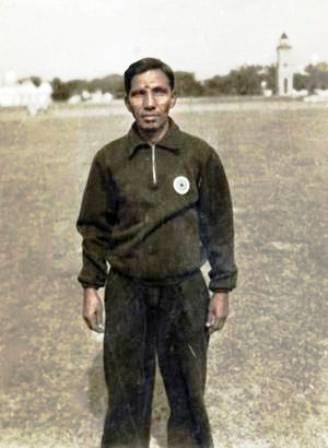 |
| Position | Forward |
| Favourite Shot | • 1960 Summer Olympics (2 out of 3 Indian goals) • 1962 Asian Games (2 goals; one each against Thailand and Japan) |
| Awards | • Best Player Award by the Kolkata Veterans Club (1961) • Arjuna Award (1962) • Banga Bibhushan (2013) |
| Personal Life | |
| Date of Birth | 4 October 1936 (Sunday) |
| Birthplace | Ammuguda village, Secunderabad, Hyderabad State, British India (now in Telangana) |
| Date of Death | 16 February 2023 |
| Place of Death | Uttarpara, Kolkata, West Bengal |
| Age (at the time of death) | 86 Years |
| Death Cause | Prolonged illness |
| Zodiac sign | Libra |
| Nationality | • British Indian (1936 - 1947) • Indian (1947 onwards) |
| Hometown | Hyderabad |
| Religion | Hinduism |
| Relationships & More | |
| Marital Status | Unmarried |
| Family | |
| Parents | Father-Tulsidas Kalidas Mother- Muthamma |
Some Lesser Known Facts About Tulsidas Balaram
- Balaram was born into a poor family. Reportedly, his family was the poorest in his locality at that time. When he was a child, he used to play football with the boys of his locality in the fields, turning them into playgrounds.
- He began playing football at the Lallaguda workshop ground in Secunderabad.
- Balaram was noticed in a Secunderabad League match, and his professional football career started there.
- He got his first football boots by requesting a cobbler to turn an old pair of police shoes into the ones required for playing football.
- Balaram was coached by Syed Abdul Rahim, who directly offered him the training after spotting his football talent in a local tournament. They had a bitter relationship in the beginning because S. A. Rahim was strict while training Balaram but later they both developed a close relationship.
- In 1956, Syed Abdul Rahim encouraged him to play for the Hyderabad team for the Santosh Trophy. Rahim also provided him with 1.25 Rupees daily to help him rent a bicycle to travel to Hyderabad for his football training.
- Susai Junior (also spelt Sussay) was Balaram’s first football idol, who played for the Hyderabad City Police football club.
- Balaram was the striker of the 1950s – 1960s Indian football team. He had the talent to score goals at crucial moments.
- His name is paired with the Indian football legends Chuni Goswami and P. K. Banerjee. These three were the fearless trio of the Indian football team and were popularly known as the ‘holy trinity’ of Indian football of the ’50s and ’60s.
- His career’s peak was between 1956 and 1960. During this tenure, he was popular as Asia’s one of the finest forwards.
- Balaram competed for India in various international tournaments – the Asian Games of 1962 (where he became an Asiad champion with India winning the gold medal), the Merdeka tournament of 1959 (where India was the runners-up team), the Melbourne Olympics of 1956 (where India reached the semi-finals), and Rome Olympics of 1960.
- He joined East Bengal Club in 1957 and became its highest-paid player at that time with a salary of Rs. 3500.
- Despite being injured, Balaram brought victory for India in the 1958 Asian Games in which he scored a crucial goal against Hong Kong in ‘extra time.’
- In the 1959 season, Balaram scored 39 goals, which was the highest score made by any player in India at that time. In that year he played for the Clubs.
- In the 1960 Rome Olympics, he scored 2 goals out of India’s total of 3 goals. These goals were crucial ones as they were against Hungary and France, the two toughest teams of that time.
- His efforts in the tournament placed India into the ‘group of death’ (a group containing several strong teams in the competition, not all of whom can compete in the next round) along with France, Hungary, and Peru.
- Balaram served as the captain of the East Bengal Club in 1961-1962. He got 2 victories as a striker in 1961 – The Double of the Calcutta Football League and IFA Shield (joint winner with Mohun Bagan Club).
- He brought victory to East Bengal in the Calcutta League after 9 years in 1961 in which he scored a goal to remember. During this year, he got the Golden Boot of the Calcutta League and the Veterans Club made him the ‘Footballer of the Year.’
- Balaram was the top scorer in the 1961 Calcutta League.
- Balaram won the Rovers Cup (1962), Durand Cup (1960), IFA Shield (1958), and DMC trophy (1957,1960) for the East Bengal Club. His overall goal score for this club was 104.
- He was diagnosed with pleurisy in 1963, which caused him severe chest pain and difficulty in breathing. Due to this and the limited availability of diet facilities for Indian footballers, his career growth stopped at an early age.
- It is said that if he had been given a proper nutritious diet and hadn’t been detected with this disease, he would’ve been as great a name as Shinji Kagawa.
- He joined the Bengal Nagpur Railway Club for job security concerns in 1963. He won the IFA Shield (1963) and the Rovers Cup (1964) for the team.
- In 1989, his name was recommended for the Padma Shri award but even after the completion of all formalities, some All India Football Federation (AIFF) officials stopped it from happening. Balaram was heartbroken by this.
- Balaram served as the coach of the Calcutta Mayor’s team. Once, his VISA formalities were delayed when his team went to play matches in Germany. Due to this, he had to stay back. He also felt disrespected.
- He served the All India Football Federation as a talent spotter and the Bengal Nagpur Railway Club as a manager.
- Since he got no recognition in his hometown Hyderabad, he chose to live in Kolkata after his retirement. There he was well-recognised and appreciated. He also limited his contact with the football fraternity and family members.
- Balaram lived an abandoned life in a flat in his later years because he was hurt by all the injustices he faced. He only gave an interview when his mentor Syed Abdul Rahim died.
- Former international defender, Arun Ghosh, described Balram as ‘a man who had two eyes at the back of his head.’
- Balaram is also considered to have good control over any position- inside forward, left flank, and attacking midfielder.
- He also served as the advisor to Nikhil Nandy Football Academy of the Dum Dum Municipality (West Bengal) and later joined the South Eastern Railway as a senior welfare officer.
- A biography is written on his life by a journalist, Sudipta Biswas, titled ‘Tulsidas Balaram – The boy, The hero, The tormented Footballer.’ It won The Biography of the Year award at the World’s largest Sports festival – Ekamra Sports Literature Festival.
- Maidan, a Bollywood film released on 11 April 2024, is based on the life of an Indian football coach named Syed Abdul Rahim (portrayed by Ajay Devgn). The film highlights the achievements of the Indian national football team under his mentorship during the 1950s and early 1960s, an era often termed ‘the golden era of Indian football.’ Many Indian footballers, including Tulsidas Balram (portrayed by Sushant Waydande), were part of these achievements.
- Balaram chose to remain a bachelor throughout his life because of his complicated medical condition.
- At the time of his death, he was living alone in a flat with no immediate family members. A month before his death, he was hospitalised for urinary infection, abdominal distension, and loss of appetite.

